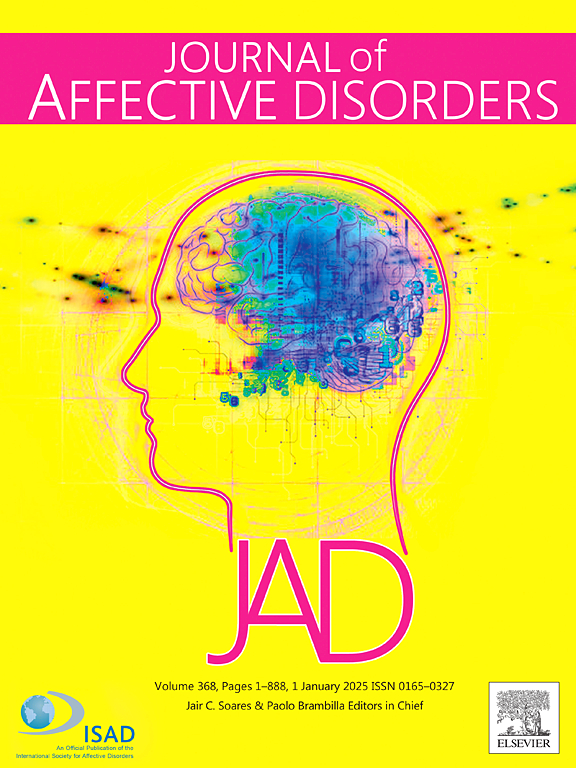重度抑郁症患者在进行 GO/NOGO 任务时,与自杀企图有关的特定频率网络连接损伤
IF 4.9
2区 医学
Q1 CLINICAL NEUROLOGY
引用次数: 0
摘要
本文章由计算机程序翻译,如有差异,请以英文原文为准。
Frequency-specific network connectivity impairments linked to suicide attempts in major depressive disorder during the GO/NOGO task
Background
Major depressive disorder (MDD) is a main risk factor of suicide, emphasizing the urgent need for understanding the neurobiological mechanisms underlying suicide attempts (SAs) in depressive patients. We hypothesized that aberrant frequency-specific functional connectivity patterns underlying an executive and inhibition task might be associated with SA in depression.
Methods
The current study enrolled 143 subjects including 43 healthy controls and 87 patients with MDD (43 patients with SA and 44 without SA), who attended a GO/NOGO task during the magnetoencephalography recording. Time-frequency features in the whole-brain sensors and frequency-specific brain network connectivity patterns were estimated. Behavioral data was recorded during the tasks and neurocognitive assessments were conducted.
Results
The SA group exhibited poorest behavioral and neurocognitive assessments performances. Decreased alpha/beta oscillations of the GO condition and increased alpha/beta oscillations of NOGO condition were observed in the SA group. Hypo-activated frontal-limbic connectivity in the alpha band and frontal-occipital connectivity in the beta band were observed in the SA group during the GO trials, meanwhile, hyper-activated frontal-temporal connectivity in the alpha band and frontal-parietal connectivity in the beta band were associated with SA during the NOGO trials. Frequency-specific features were correlated with the severity of suicide risk, neurocognitive assessments, and could be used to predict potential SAs.
Conclusions
Neuroimaging and neurocognitive evidences supported altered alpha/beta oscillations and connectivity patterns associated with SA in depression, suggesting that depressive patients with SA might exhibit impaired cognitive control functions.
求助全文
通过发布文献求助,成功后即可免费获取论文全文。
去求助
来源期刊

Journal of affective disorders
医学-精神病学
CiteScore
10.90
自引率
6.10%
发文量
1319
审稿时长
9.3 weeks
期刊介绍:
The Journal of Affective Disorders publishes papers concerned with affective disorders in the widest sense: depression, mania, mood spectrum, emotions and personality, anxiety and stress. It is interdisciplinary and aims to bring together different approaches for a diverse readership. Top quality papers will be accepted dealing with any aspect of affective disorders, including neuroimaging, cognitive neurosciences, genetics, molecular biology, experimental and clinical neurosciences, pharmacology, neuroimmunoendocrinology, intervention and treatment trials.
 求助内容:
求助内容: 应助结果提醒方式:
应助结果提醒方式:


